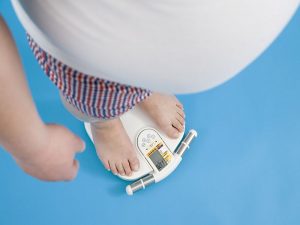- Home
- Editorial
- News
- Practice Guidelines
- Anesthesiology Guidelines
- Cancer Guidelines
- Cardiac Sciences Guidelines
- Critical Care Guidelines
- Dentistry Guidelines
- Dermatology Guidelines
- Diabetes and Endo Guidelines
- Diagnostics Guidelines
- ENT Guidelines
- Featured Practice Guidelines
- Gastroenterology Guidelines
- Geriatrics Guidelines
- Medicine Guidelines
- Nephrology Guidelines
- Neurosciences Guidelines
- Obs and Gynae Guidelines
- Ophthalmology Guidelines
- Orthopaedics Guidelines
- Paediatrics Guidelines
- Psychiatry Guidelines
- Pulmonology Guidelines
- Radiology Guidelines
- Surgery Guidelines
- Urology Guidelines
Swallowable balloon to fight obesity without surgery

New study shows balloon in a capsule helps patients lose nearly twice as much weight than diet, exercise and lifestyle therapy alone
Patients with obesity who swallowed gas-filled balloon capsules designed to help them eat less, lost 1.9 times more weight than patients who relied on diet, exercise and lifestyle therapy alone, according to new research presented today at ObesityWeek 2016.
"The significant weight loss achieved with the Obalon 6-Month Balloon System is maintained at 12 months," said Aurora Pryor, MD, study co-author and Chief Bariatric, Foregut and Advanced GI Surgery, Stony Brook University. "This combination of lifestyle modification and balloon therapy provides a new low risk option for patients struggling with obesity."
The Obalon 6-Month Balloon System, a swallowable, gas-filled intragastric balloon for weight loss in adults with obesity for whom diet and exercise has failed, was approved in September by the U.S. Food and Drug Administration (FDA). It involves a balloon contained within a capsule that, once it reaches the stomach, is inflated with gas via a microcatheter. Up to three balloons may be placed over the first three months, but the entire treatment period lasts six months. The inflated balloons make patients feel full. Treatment is accompanied by a moderate intensity diet and behavior modification program. The device is manufactured by Obalon Therapeutics, Inc., based in San Diego, CA.
Results of the study were based on a double-blinded randomized, sham-controlled trial of 387 patients, about half of whom received treatment with the Obalon balloon and the other half with a sugar-filled sham capsule designed to look like the device. Patients, who had a body mass index (BMI) of between 30 and 40, swallowed three capsules over a 12-week period (one every three weeks). All patients at the 15 study sites also underwent 25 minutes of lifestyle therapy administered by a blinded registered dietitian every three weeks. After six months, patients were informed which capsule they received and those with the Obalon balloons had them removed endoscopically.
Average percent total weight loss after six months for Obalon balloon patients was 6.81 percent, while those in the sham control group had 3.59 percent total average weight loss. Balloon-treated patients had nearly 25 percent excess weight loss. Six months after the balloons were removed, 89.5 percent of the average total weight lost during the treatment period was maintained. Researchers say a single adverse event, a bleeding gastric ulcer, occurred in one balloon patient on high dose NSAIDs who had an outpatient knee replacement procedure. Non-serious adverse device events, mostly abdominal cramping and nausea, occurred in 90.8 percent of patients (99.6% were rated mild or moderate).
"There is no magic pill for obesity, but this swallowable balloon and other intragastric balloons may offer new hope to people who otherwise would not seek treatment or not have as good a result with diet and exercise alone," said Raul J. Rosenthal, MD, ASMBS President and Chairman, Department of General Surgery, Cleveland Clinic Florida, who was not involved in the study. "The balloon and other technologies may help to fill the therapeutic gaps between diet and exercise and medical therapy, and medical therapy and surgery, where the gaps are quite large."
People with obesity and severe obesity have higher rates of heart disease, diabetes, some cancers, arthritis, sleep apnea, high blood pressure and dozens of other diseases and conditions. Studies have shown individuals with a BMI greater than 30 have a 50 to 100 percent greater risk of premature death compared to healthy weight individuals.
Metabolic/bariatric surgery has been shown to be the most effective and long lasting treatment for severe obesity and many related conditions and results in significant weight loss. The Agency for Healthcare Research and Quality (AHRQ) reported significant improvements in the safety of metabolic/bariatric surgery due in large part to improved laparoscopic techniques.
The risk of death is about 0.1 percent[4] and the overall likelihood of major complications is about 4 percent.
Notes
[1] Office of the Surgeon General -- U.S. Department of Health and Human Services. (2004). Overweight and obesity: health consequences.
[2] Kaplan, L. M. (2003). Body weight regulation and obesity. Journal of Gastrointestinal Surgery. 7(4) pp. 443-51. Doi:10.1016/S1091-255X(03)00047-7.
[3] Encinosa, W. E., et al. (2009). Recent improvements in bariatric surgery outcomes. Medical Care. 47(5) pp. 531-535.
[4] Agency for Healthcare Research and Quality (AHRQ). (2007). Statistical Brief #23. Bariatric Surgery Utilization and Outcomes in 1998 and 2004.
[5] Flum, D. R., et al. (2009). Perioperative safety in the longitudinal assessment of bariatric surgery. New England Journal of Medicine. 361 pp.445-454.

Disclaimer: This site is primarily intended for healthcare professionals. Any content/information on this website does not replace the advice of medical and/or health professionals and should not be construed as medical/diagnostic advice/endorsement or prescription. Use of this site is subject to our terms of use, privacy policy, advertisement policy. © 2020 Minerva Medical Treatment Pvt Ltd